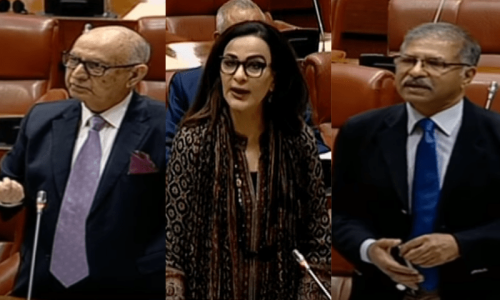
THE Pakistan Time Use Survey (TUS) shows that on average, men spend four times more hours per day on monetarily productive activities compared to women. In contrast, women devote 10 times the amount of time spent by men to household chores, child-rearing and elderly care.
This higher reproductive burden for women does not lessen with work: working women — even those working full-time — dedicate as much time as non-working ones to housework, leaving little to no time for leisure, resulting in significant time poverty. In fact, working women tend to be more ‘time poor’, relative to the ones who do not work due to the double burden of financially productive and reproductive tasks.
These figures are based on data collected from households across Pakistan back in 2007. Of course, part of the reason why average statistics show such little time spent by women on productive activities is due to the vast number of women who are not part of the labour force. Since then, there has been some improvement in women’s labour force participation rates which have risen from 20 to 22 per cent according to the 2017 Pakistan Labour Force Survey. This is likely reflected in some increase in time spent at work, but has there also been a simultaneous decrease in the time women spend on chores and care work? Or do women, working women in particular, continue to be time poor? With no TUS since 2007, we do not have national-level statistics to gauge trends in time spent by men and women in productive and reproductive activities and the associated time poverty.
Being time poor prevents women from unleashing their full potential.
My own fieldwork done in 2015 in Lahore, Sialkot, Karachi and Hyderabad on unskilled workers, however, paints a dire picture. Interviews with domestic and home-based working women signalled that they earned meagre incomes and faced heavy time burdens, with days typically lasting 12 to even 16 hours. Further, household tasks continued even on days taken off from work as the women interviewed underlined how being the primary and sometimes only breadwinner did not lessen housework.
At the same time, respondents repeatedly highlighted how the state, in fact, added to their time poverty. Here, the poor provision of public goods especially water and electricity made everyday tasks harder to complete. This increased time poverty while simultaneously reducing the time that women spent on income-generating activities. In fact, money and time poverty seem to go hand in hand, as was reflected not just in my own data but in TUS too — as those in minimal income jobs typically work in multiple places. This factor, along with commuting time, reduces hours left for leisure, especially for women who also have household and care duties to perform.
In contrast, those in higher-income brackets cannot only make ends meet through a single job, but may have enough income to afford help to lessen this double burden. Even in richer, more educated households where both spouses worked full-time, it was still typically the woman who remained directly or indirectly responsible for household and care duties — performing them either herself or supervising hired help — thus reducing her free time as opposed to the man’s.
The real value of household and caregiver work weighs in at a staggering $10 trillion worldwide, accounting for 39pc of GDP in economies such as India, as recently calculated by the McKinsey Global Institute. Sadly however, the convention is to not value reproductive work in and of itself but to consider it as lost value in terms of the productive economy. Hence, the estimation — currently taken only at minimum wage levels — considers value added to the economy if the time women spend on household tasks were spent on financially productive activities instead.
Although housework does indeed imply that women have less time for the market economy, in some cases it means that they step out of the labour market altogether.
While a women’s entry into the labour force in Pakistan is constrained by several socioeconomic and cultural factors including education levels, lack of transport, and familial restrictions, it is housework that dominates. Thirty-nine per cent of non-working women cited ‘no time left over from housework’ as the main reason for not working according to the 2015 Pakistan Social and Living Standards Measurement survey. Of course, reproductive work is an inevitable and significant part of our daily reality, with large family sizes accounting for a substantial chunk of the day spent in caring for family members.
Women’s time poverty has been receiving more media attention in recent years not only due to its negative health effects, with anxiety, depression and sleep disorders being linked to a lack of leisure time, but also because being time poor prevents women from unleashing their full potential. Aside from housework leading to a loss of independent income, a disproportionate share of housework falling on women is also an issue of equality.
One of the primary goals in Pakistan’s Vision 2025 is to increase women’s labour force participation. As more women join work, there is a need to reduce women’s housework. A first step would be to recognise the important contribution and, indeed, the high real value of reproductive work itself. This recognition could in turn prompt men to share the burden more equally with women.
But, it is not just working women’s time poverty that needs to be reduced. A review conducted by the Asian Development Bank shows how infrastructure development goes a long way in this regard. Better roads, sanitation, along with water and electricity access, even gas and fuel supply to households, all have a major impact on reducing the time women spend on house and caregiving work. There is thus a need at the public policy level in Pakistan to introduce interventions in infrastructure projects to address this directly.
The writer is assistant professor of economics at Lahore University of Management Sciences.
Published in Dawn, May 28th, 2018











































